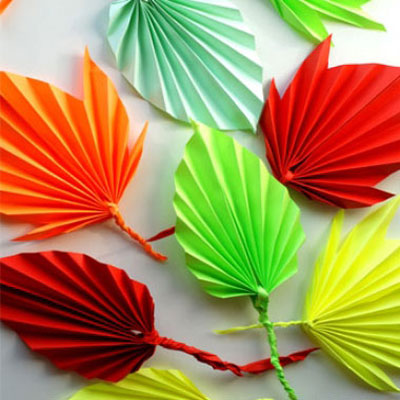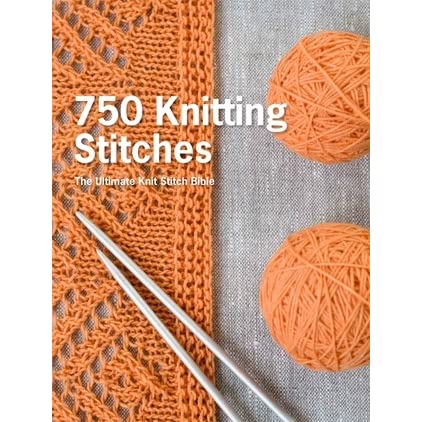
You need to select the right size knitting knitting needles for your project. Your needle size will determine the size of the finished product and the amount of yarn you have to buy. The material of your needles is another important consideration. You can find needles made of wood, plastic or metal. You can also select a set that includes different sizes of needles in separate pieces. This is particularly useful for larger projects.
Gauge swatches can be used to determine the right size knitting needles for your project. These swatches will typically be 4 x 4 inches (about 10 cm square) with numbers at the bottom that indicate the size of your gauge. The number of stitches per inch in the project determines the gauge.

When picking knitting needles for your project, be aware of how it will look. The gauge will vary depending on the type of stitch, and the amount of tension the person knitting the project has. Thicker yarns will produce larger stitches, while thicker yarns with more loft will produce smaller stitches. Your knitting project's gauge will also depend on the type of pattern you choose. A sweater design for example should have at least 5 stitches per in. A garter or lace stitch will pull in. It is important to gauge a cable pattern.
Knitting needles come with a variety options and lengths. Some people prefer shorter needles because they are best for smaller projects. Some prefer to use longer needles which offer more space for the stitches. You can also use double-pointed or rounded needles that have points at both ends. These needles are perfect for socks knitting, but they also work well in sweater sleeves and other tasks.
You can choose from straight needles, double-pointed needles, or interchangeable needles. Each type has its unique features and certain patterns may require specific types of needles. Try a different yarn if you are having trouble with one type. For example, using a straight needle with worsted weight yarn will work well for beginners, but you may have trouble with a cable pattern.
Using double-pointed needles with a bend in the middle is also a good idea, as it allows the knitting to move around. You can purchase sets of 4-6 needles or buy individual needles. This needle is particularly useful for moving active stitches. This needle is also useful for small projects like small sweater sleeves or toys.

Also, you might consider buying interchangeable circular needles. These needles come with interchangeable pieces which can be combined. These needles are best for large projects. They are available in both sets and individual pieces. They can also be purchased in sets, which can be a bit more expensive than buying them individually.
FAQ
What are some hobbies that seniors might enjoy?
Senior citizens should find activities they love to do. They should also be active and take part in activities such as sports or other physical activities.
They may be interested in joining clubs to find people with similar interests. This way, they'll feel less lonely as they age.
Seniors must also be on the cutting edge of new trends. They could be interested in fashion, art, music and literature.
What kind of hobbies is best for introverts.
Introverts can concentrate on one thing at the same time. They like solitude activities such as reading and writing, listening to music and watching movies.
They also enjoy spending quiet time alone. They do not like to socialize all day. They can even become bored when they're surrounded by people.
Introverts will often choose hobbies that require them alone. For example, they may enjoy reading books, listening to music, taking photographs, painting, writing poetry, etc.
Introverts may even prefer to live alone. They can focus on their hobbies and not be distracted by other people.
What are observation hobbies exactly?
Observation hobbies allow you to observe others doing the same thing. This could be watching sports, reading books or going on holiday. It could also be observing other people as well.
Observation hobbies can be very beneficial because they allow you to learn how creative thinking works. You can use this knowledge later when you're working on projects for yourself or others.
You will discover that learning is easier when you are interested.
You might watch or read about football to learn more. Visit or take photographs to learn more about the art of photography.
You could also buy a guitar or play along online to music if you are a musician.
You have the option to make your own meals or take out at a restaurant if you enjoy cooking.
If gardening interests you, you could plant vegetables or flowers.
If dancing is something you enjoy, join a dance class.
If you love painting, you can paint pictures.
If you like writing, you could write stories or poems.
If you like drawing, you could draw pictures.
If you love animals, you could look after pets or work at a zoo.
If science interests you, you can study biology, chemistry or physics.
You can read books, listen to podcasts, or watch films if history interests you.
You could explore the world or travel to places you love if you are a lover of traveling.
What is a hobby that kids can do?
A hobby for kids is any activity they like to do as part of their normal daily routine. Children might be drawn to, build, paint, create stories, play with toys or watch TV.
Many parents worry that their kids will get into trouble when they're free to do what they want. However, this is not always true. Your child won't get in trouble if they are safe and don't do any harm to anyone.
It is important to remember that people may not always choose to do what they enjoy. If they don't like writing but love drawing, they might choose to draw images instead.
There are many different hobbies, so it is up to you which one you love the most.
What are some good hobby ideas?
Hobby Ideas for people who love to learn and teach others.
Hobbies are great ways to spend time doing what you enjoy while learning something new at the same time.
While there are many types of hobbies available, most share the same characteristics. They're often fun and easy to do.
These also involve helping others.
Even though you might not think of yourself to be a teacher or a tutor, chances are there are things you can do that could help someone else.
You can make a difference in the lives of others by starting a hobby.
Statistics
- Studies show that just six minutes of reading can reduce stress levels by 60 percent. (oberlo.com)
- This 100% accurate personality-analyzing hobby quiz discovers your passion based on your characteristics. (quizexpo.com)
- I am 100% biologically a woman (discover.hubpages.com)
- Almost 80% of people claim to have no hobby. (hobbylark.com)
- A new survey by Pew Research Center of teens ages 13 to 17 finds that 36% of girls feel tense or nervous about their day every day; 23% of boys say the same. (pewresearch.org)
External Links
How To
How to Start Gardening
Gardening has been around since the dawn of agriculture. It requires patience, persistence, and determination. You must choose a suitable location to start your garden. You could choose to plant food on a large parcel of land, or in your own backyard. Next, select the kind of plants that are most appealing to you. Do you prefer vegetables, or flowers? Some people are passionate about growing herbs, while others like raising livestock like rabbits. Before you decide which crops you will plant, consider the amount of space you have. If your climate is cold, you may decide to plant berries and fruits.
Once you have made your choice, it is time to prepare the soil. It is vital that your soil is prepared properly to determine whether or not your plants will thrive. The soil should be rich in organic matter to provide nutrients for your plants' roots. Organic matter includes leaves, twigs (grass clippings), manure, compost, and manure. After you have prepared your soil you must add nutrients. You might need different amounts, depending on the species of plants that you want to grow. An online fertilizer calculator can help you calculate these values. Many fertilizers are available, so make sure you know what you are buying.
After you have prepared your soil, and added the correct nutrients, you will need to wait until your seed germinates. The process takes between 2 weeks and 3 months depending upon the climate in your area. Once the seeds have sprouted you will need to water them often. You can endanger your plants if you water them too often or too little. You should ensure that your plants get enough water at regular intervals. Avoid overwatering. Overwatering your plants can lead to root disease and fungal infections. When watering your plants, remember that most plants require less water during the warm summer months than in winter. Also, remember that certain plants need to dry out after watered. For tomatoes, it is important to keep them moist but dry. They won't tolerate soggy soil. After they have finished flowering, they must go dormant. When plants stop producing new growth, they go dormant and start storing energy for next season's harvest. During dormancy, the plant stops sending signals to its roots telling them to produce food. Throughout this time, plants can store energy. However, the plant will die if temperatures drop below freezing or there is insufficient sunlight.
You may be limited in what plants you can grow if you live in an urban area. Concrete sidewalks, roads and buildings are common in urban areas. They block sunlight from reaching the ground. Concrete absorbs sunlight, which prevents the soil beneath from getting enough sun exposure. Because of this lack of sunlight, many plants cannot survive in cities. There are many plants that can survive in urban environments. Many trees, shrubs, perennials, and other plants can adapt to urban life. Many annuals are also possible to grow indoors in containers. You can bring greenery inside your home all year round, regardless of the weather.
You're now ready to plant after you have chosen where and what to grow in your garden.